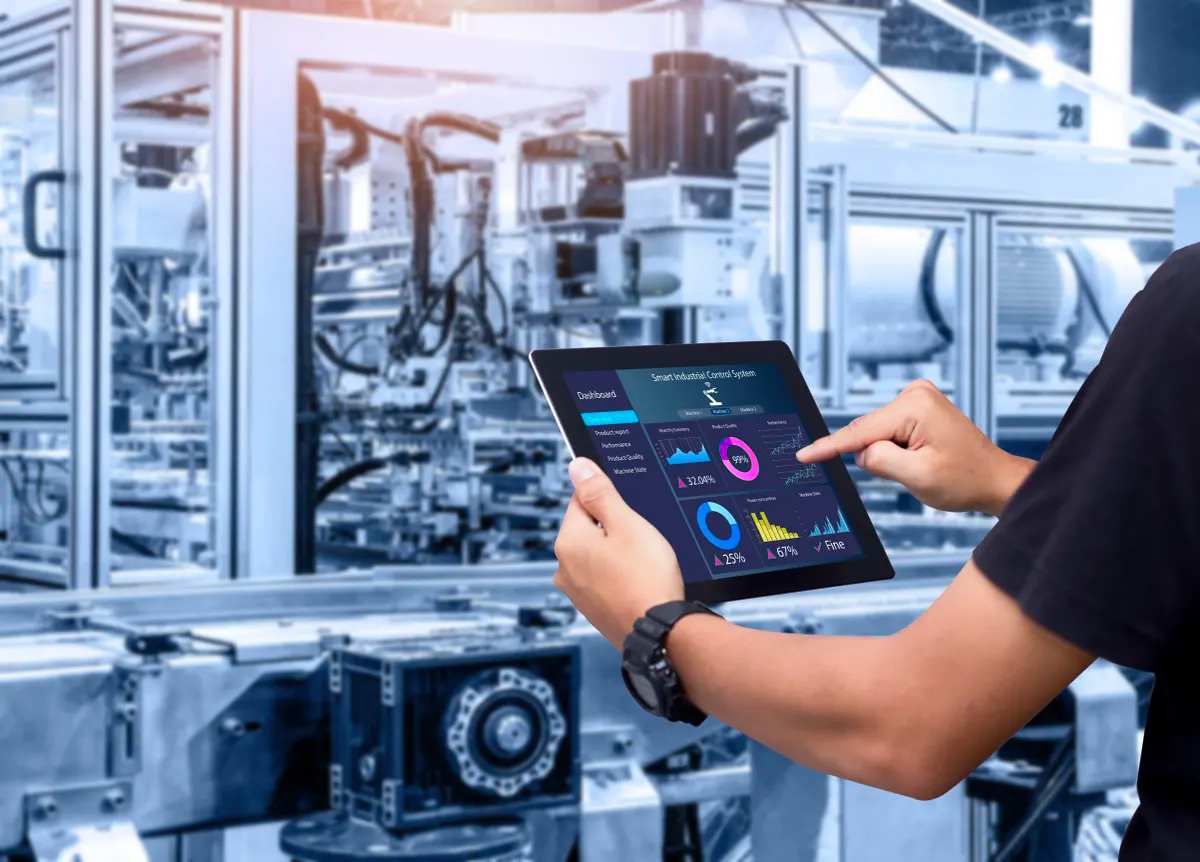In IoT Development
In this post, we will explore the benefits of IIoT, how it works, and how businesses can implement IIoT in their operations.

Management

The Industrial Internet of Things (IIoT) is the application of Internet of Things (IoT) technology to industrial settings. IIoT is transforming the way businesses operate by leveraging connected devices, sensors, and data analytics to drive greater efficiency, reduce costs, and enhance productivity. In this article, we will explore the benefits of IIoT, how it works, and how businesses can implement IIoT in their operations.
What is IIoT?
The IIoT is a network of interconnected devices, machines, and sensors that communicate with each other to collect and analyze data. This data is used to optimize operations, reduce costs, and improve overall efficiency. The IIoT uses a range of technologies, including sensors, machine learning, and cloud computing, to gather and analyze data in real-time.
Benefits of IIoT
The IIoT provides businesses with a range of benefits, including:
-
Increased Efficiency: By leveraging real-time data, IIoT can help businesses optimize their operations for maximum efficiency. This can result in reduced costs, improved productivity, and enhanced quality control.
-
Predictive Maintenance: The IIoT can help businesses predict when equipment is likely to fail, allowing for preventative maintenance to be scheduled before a breakdown occurs. This can reduce downtime and maintenance costs.
-
Improved Safety: The IIoT can help businesses identify potential safety risks and hazards in real-time, allowing for corrective action to be taken before an accident occurs.
-
Increased Sustainability: The IIoT can help businesses reduce their environmental impact by optimizing energy consumption and minimizing waste.
How Does IIoT Work?
The IIoT works by using sensors and connected devices to gather data from machines and equipment. This data is then transmitted to a central platform, where it is analyzed in real-time. The data can be used to identify patterns and trends, allowing businesses to optimize their operations and improve efficiency. The IIoT can also be used to automate processes, allowing for greater productivity and reduced labor costs.
Implementing IIoT in Your Business
Implementing IIoT in your business can be a complex process, but it can deliver significant benefits. Here are some steps to help you get started:
-
Identify Your Objectives: Before implementing IIoT, it's essential to identify your objectives. Determine which areas of your business could benefit from IIoT and set clear goals for what you want to achieve.
-
Assess Your Infrastructure: Assess your existing infrastructure to determine which devices and sensors you already have in place. Determine which additional equipment is needed and what modifications may be required.
-
Choose Your Platform: Choose a platform that can handle your data needs and provide real-time analytics. Look for a platform that is scalable, secure, and easy to use.
-
Test and Refine: Once you have implemented IIoT, it's essential to test and refine your systems. Monitor your data analytics and adjust your operations as needed to optimize your results.
IIoT: some examples
Manufacturing
In the manufacturing industry, IIoT is used to monitor and optimize production processes. For example, a factory may use IIoT sensors to track the performance of equipment, detect potential issues, and predict maintenance needs. This can help reduce downtime and increase efficiency.
Transportation
IIoT is also used in the transportation industry to improve logistics and supply chain management. For example, a trucking company may use IIoT sensors to track the location and condition of goods in transit, and optimize delivery routes in real-time based on traffic and weather conditions.
Agriculture
IIoT can be used in the agriculture industry to monitor and optimize crop production. For example, sensors can be used to track soil moisture levels, temperature, and other environmental factors to help farmers make data-driven decisions about irrigation and fertilization.
Energy
In the energy industry, IIoT can be used to monitor and optimize the performance of power plants and other energy infrastructure. For example, sensors can be used to detect potential issues with equipment, and predict maintenance needs to help prevent downtime.
Healthcare
IIoT is also being used in healthcare to monitor patient health and optimize healthcare delivery. For example, wearable devices can be used to track patient health metrics, such as heart rate and blood pressure, and alert healthcare providers if intervention is needed.
Summing Up
The Industrial Internet of Things (IIoT) is transforming the way businesses operate by leveraging connected devices, sensors, and data analytics to drive greater efficiency, reduce costs, and enhance productivity. By implementing IIoT in their operations, businesses can gain a competitive edge and improve their bottom line. While implementing IIoT can be a complex process, the benefits are significant, making it a worthwhile investment for businesses looking to stay ahead in today's rapidly changing business environment.

